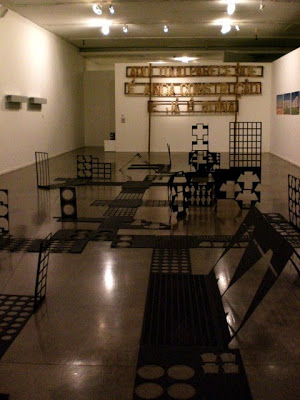Curator:
Adriano Pedrosa (lives and works in São Paulo, Brazil).
Description:
“One of the most important exhibitions in Brazil, the São Paulo Museum of Modern Art’s ‘Panorama da Arte Brasileira’ (Panorama of Brazilian Art) celebrates its 40th birthday. The controversial edition entitled ‘Mamõyguara opá mamõ pupé’ is curated by Adriano Pedrosa. Instead of exhibiting Brazilian artists as it has been the norm in the Panorama exhibition, Pedrosa has decided to exhibit foreign artists whose work has been influenced by Brazilian art and culture.
“The decision to hold a Panorama da Arte Brasileira without local artists is not arbitrary. Over the last few decades, Brazil has come to occupy a place of reference internationally in several creative areas of art and architecture, especially from the 1950s, with Oscar Niemeyer’s modernism and Lygia Clark, Lygia Pape, and Helio Oiticica’s neoconcretism. The idea is to question the idea of a territorial view of art that classifies artists and art production according to the country and region in which it is produced. In a globalized world, where physical frontiers are becoming less and less determinant in the cultural evolution of nations, as information channels multiply and become more accessible, emblematic artistic manifestations from a wide range of places serve as inspiration for new creators, regardless of their origins.
“According to Pedrosa, Brazil’s exhibition agenda is already overwhelmingly focused on Brazilian artists. The curator believes there is a bigger need for international exhibitions in Brazil; and because the Panorama is a biennial exhibition, it would be difficult to propose a significant new view of Brazilian work, given the short interval of time for substantial changes in the country’s artistic panorama.
“The name of this edition, ‘Mamõyguara opá mamõ pupé’,’ echoes this proposal. It means ‘foreigners everywhere’ in Tupi (the now extinct language of Brazil before the arrival of the Europeans), and comes from a work by Claire Fontaine presented in the form of a neon. The Portuguese translation, ‘estrangeiros por toda parte’ will also be displayed. The original expression is taken by the artists from the name of a group of Italian anarchists who struggle against xenophobia. The translation in Tupi, by Professor Eduardo Navarro, specialist in Tupi at the Universidade de São Paulo, keeps the double meaning that a) there are foreigners everywhere and that b) no matter where they go artists are foreigners.
“There are two categories of artists in the exhibition. The first and most numerous is of artists who already have a career recognizably influenced by aspects of Brazilian culture. In this case, there was a curatorial concern with exploring careers in which Brazil’s influence can clearly be seen, as opposed to artists who occasionally use more obvious aspects, like a foreign visitor who only absorbs the culture superficially. The second category consists on Panorama’s artists-in-residence initiative, which provided younger artists with an interest in Brazilian culture and art with up to eight weeks of immersion in São Paulo. The greatest concern wasn’t the work to be exhibited, but the process of mediation with Brazilian culture and its possible influence in the artists work. The artists-in-residence are: Adrián Villar Rojas, Alessandro Balteo Yazbek, Claire Fontaine (James Tennant Thornhill and Fulvia Carnevale), Jose Dávila, Juan Pérez Aguirregoicoa, Mateo López, Runo Lagomarsino, and Tove Storch.”
—Pablo Léon de la Barra, “Adriano Pedrosa’s ‘Panorma’ of Brazilian Art without Brazilian Artists Opens at MAM São Paulo,” Centre for the Aesthetic Revolution (blog), October 3, 2009.


